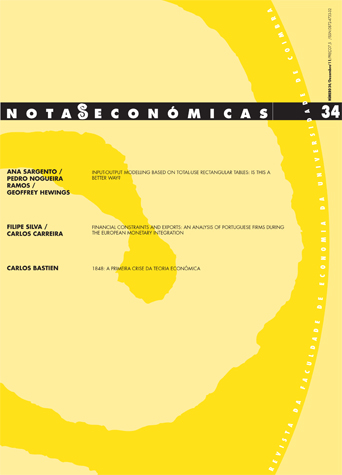Input-output modelling based on total-use rectangular tables: is this a better way?
DOI:
https://doi.org/10.14195/2183-203X_34_1Abstract
Input-output tables can be presented in different formats, according to three main criteria: 1) symmetric or rectangular format; 2) total or domestic-use flows and 3) valuation prices (basic prices – bp or purchasers’ prices – pp). Official National Accounts (at least in EU) produce in a regular base a total use rectangular table at pp – also known as the Make and Use (M&U) format – that is different from the lay-out upon which traditional input-output models were developed (domestic use, symmetric, bp). The problem with this latter one is of course that it is only available at times in many countries. The objective of this paper is to prove (under common hypotheses) the equivalence between two alternative procedures, from the point of view of the results of an input-output model: 1) to convert the M&U input-output table into the traditional format – a domestic-use symmetric table at bp – and then implement the model; 2) to perform the direct modelling of the original table (the total-use rectangular table at pp). That equivalence is illustrated with Portuguese data for the year 2002.Downloads
Download data is not yet available.
Downloads
Published
2011-12-13
Issue
Section
Articles
License
Authors retain copyright and grant the journal right of first publication with the work simultaneously licensed under a Creative Commons Attribution License that allows sharing the work with recognition of authorship and initial publication in Antropologia Portuguesa journal.









